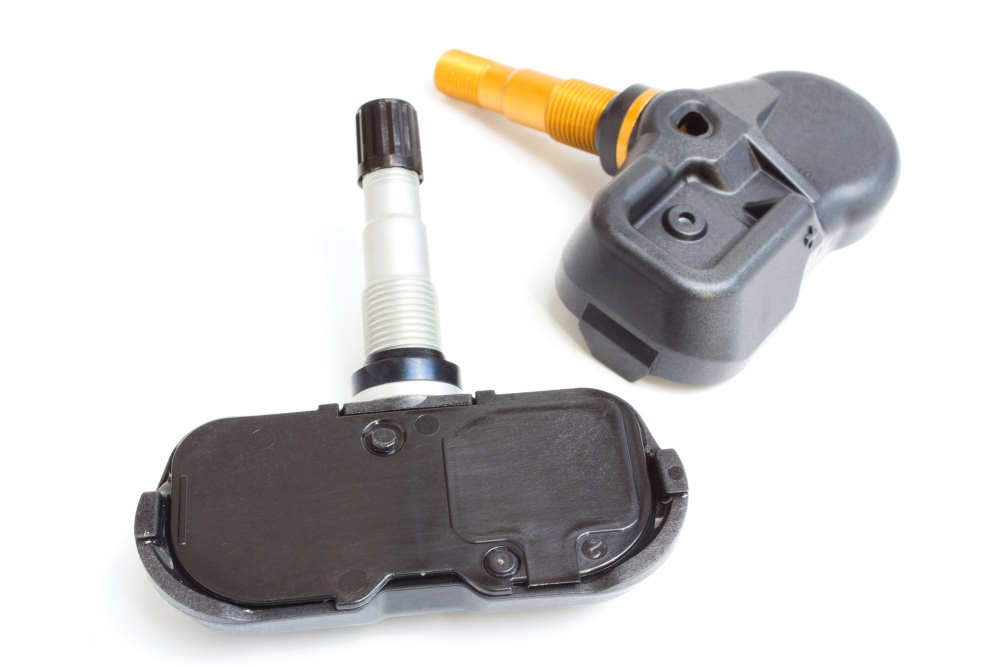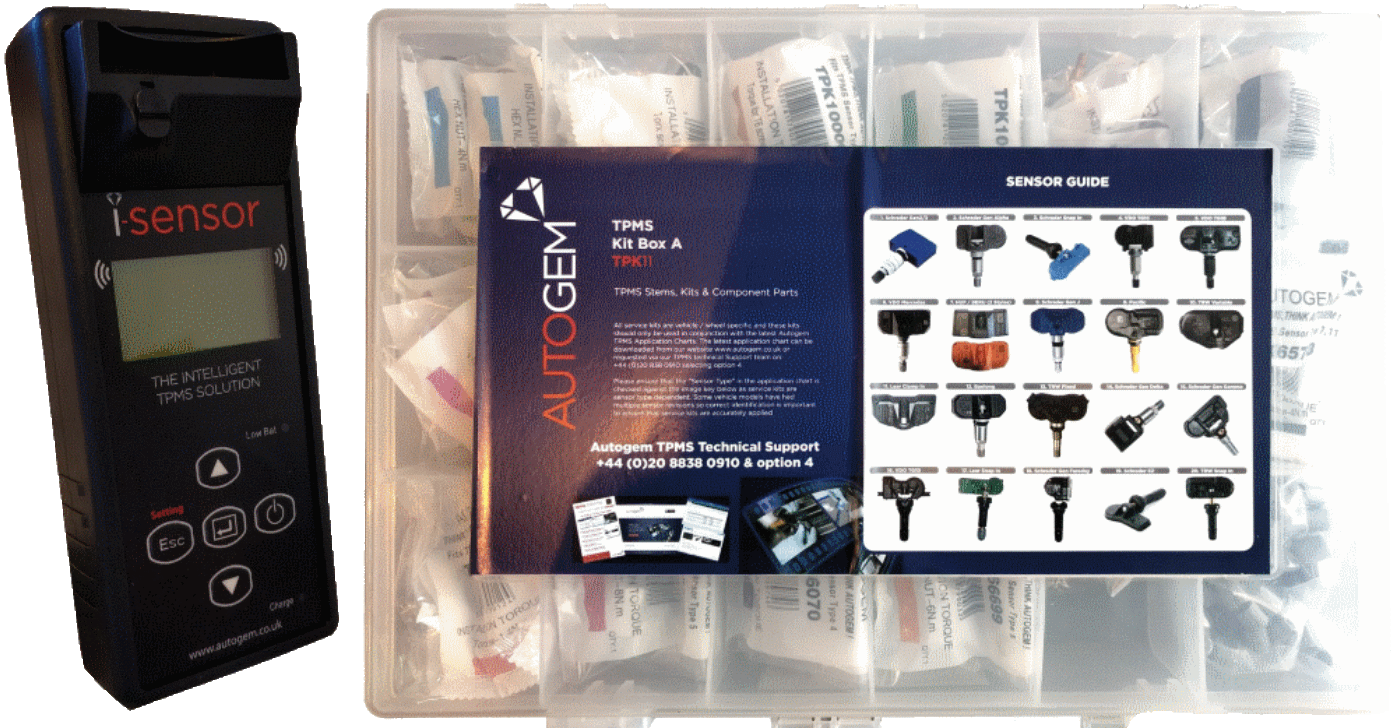An introduction to TPMS
TPMS allows your vehicle to sense pressure changes in
each wheel and therefore alerts you if you suddenly lose air pressure due to
a puncture for example.
Here at Rhino Tyres Neston we have all the diagnostic equipment required
to remotely read, re-program, diagnose, repair and replace direct
TPMS sensors.
There are two types of TPMS, direct and indirect. The differences between
these systems are covered below.

 A pair of Direct TPMS sensors with metal stems
A pair of Direct TPMS sensors with metal stems
